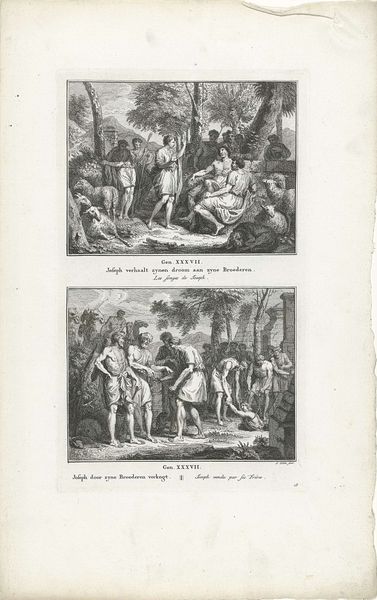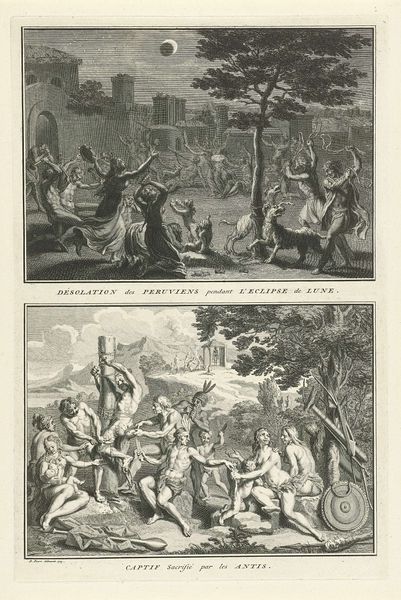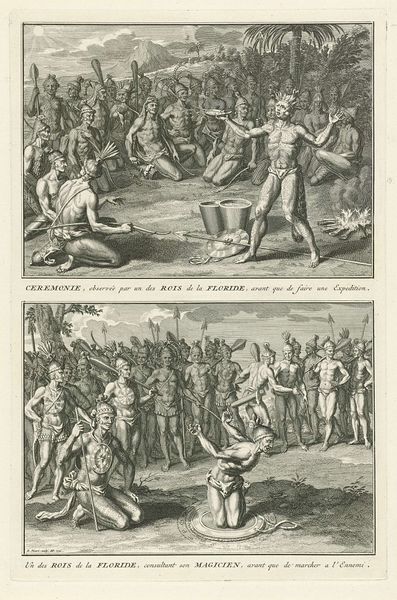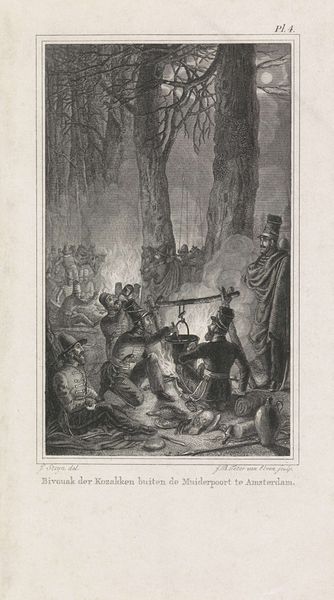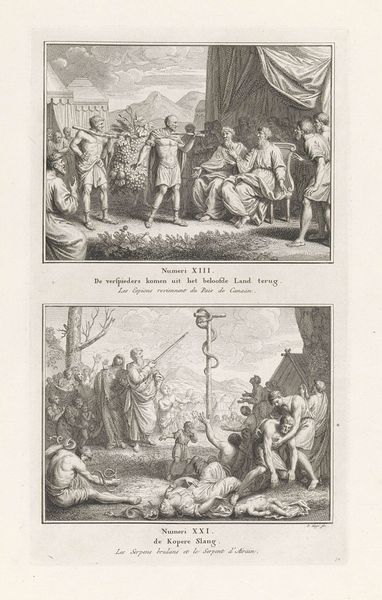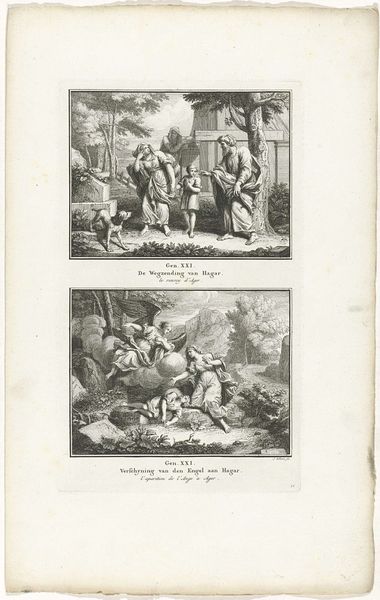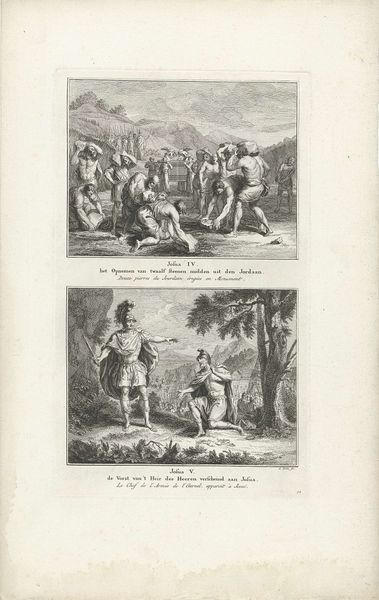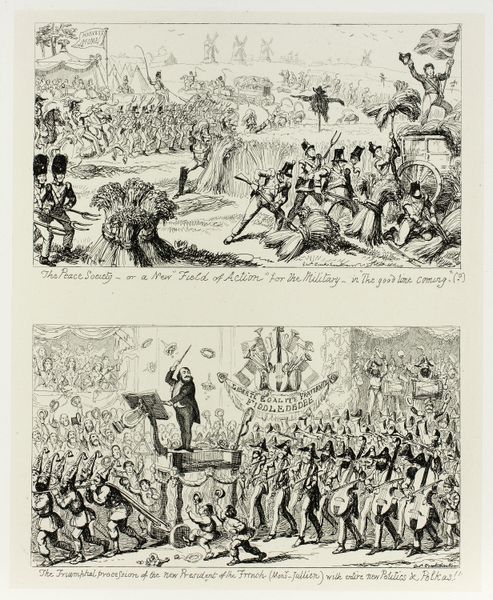
print, engraving
#
african-art
#
narrative-art
#
baroque
# print
#
group-portraits
#
islamic-art
#
genre-painting
#
history-painting
#
engraving
Dimensions: height 338 mm, width 224 mm
Copyright: Rijks Museum: Open Domain
Editor: This engraving from 1729 by Bernard Picart, titled "Besnijdenis en begrafenis onder de Khoikhoi" or "Circumcision and burial among the Khoikhoi," depicts scenes of daily life. It strikes me how detached the perspective feels; it's like peering into another world. What’s your take on how it reflects the context of its time? Curator: It is interesting that you find it detached, and that reveals much about how art like this was created to circulate information or solidify perceived truths about unfamiliar populations. Picart, of course, never witnessed these events, relying instead on travelers’ accounts and colonial interpretations. We see rituals of circumcision and funerary rites presented through a lens of European understanding, categorized and displayed for a European audience. Editor: So, it's not necessarily an accurate depiction, but more of a curated performance for a specific audience? Curator: Precisely. Think about how the portrayal reinforces existing power structures. The act of documenting, engraving, and distributing images like these allowed European society to categorize, control, and otherize cultures and traditions different from their own. What does the composition tell you about this power dynamic? Editor: Well, the scenes are laid out almost clinically, separated neatly, suggesting a kind of scientific observation rather than a cultural exchange. The people almost seem like specimens. Curator: Exactly. The work tells us less about the Khoikhoi people and more about European perceptions of them and the social role this kind of imagery played in bolstering colonialism. The museum itself, displaying this print, is part of that legacy, isn't it? Editor: That’s a perspective I hadn’t fully considered. It really challenges how we interpret historical art and its continued presence in museums. Curator: Indeed. Examining the artwork's production and circulation opens a window onto the politics of representation. We understand it better as a cultural artifact with complicated, often problematic, social and historical ramifications.
Comments
No comments
Be the first to comment and join the conversation on the ultimate creative platform.
